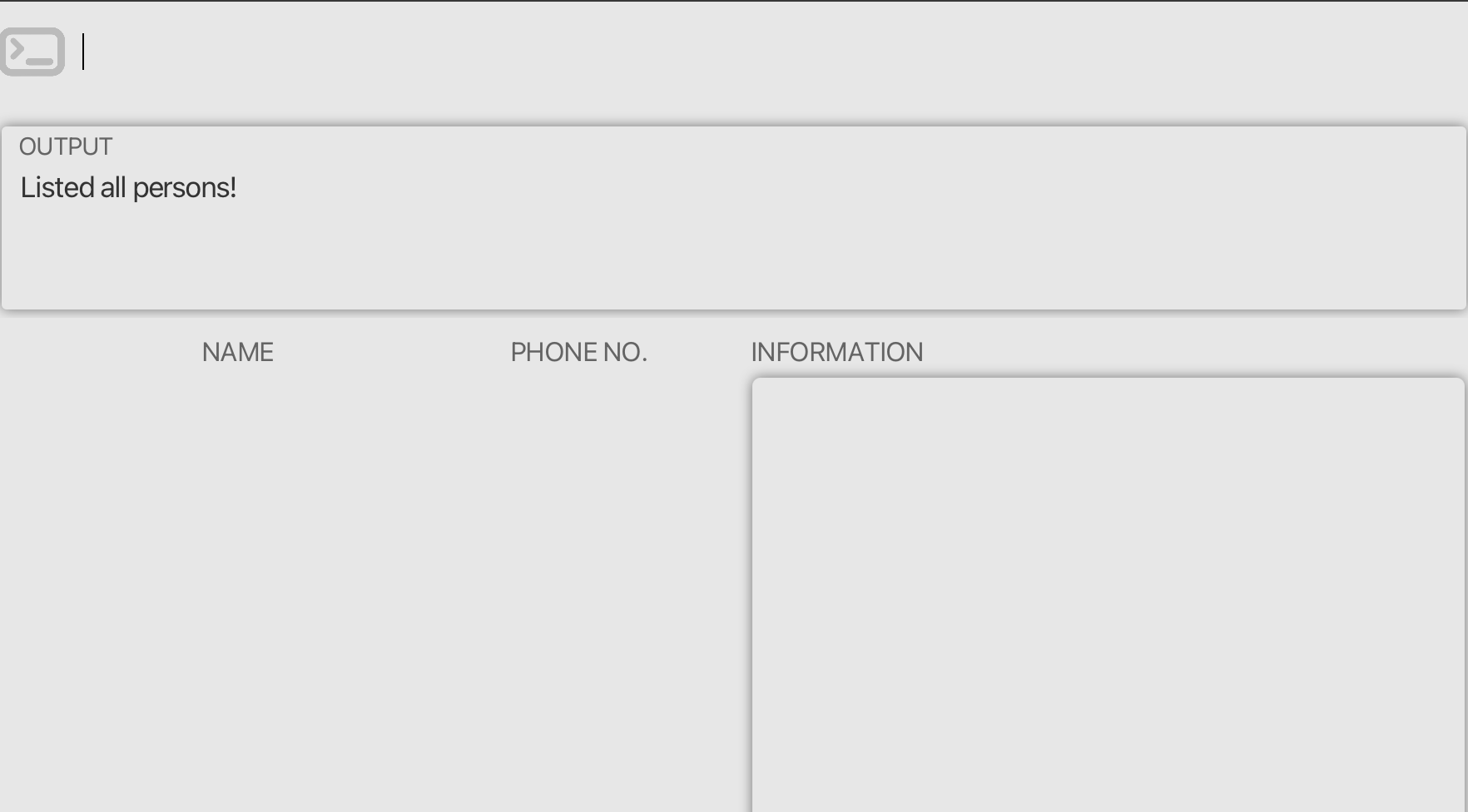
Open m1oojv opened 10 months ago

Based on the screenshot, it is obvious that there is nobody in your contact list. It is hence true that the application has listed everyone in your contact list.
Unless, there is a situation where there are indeed people in the contact list, yet this output is shown. Please clearly indicate the steps to replicate it as we are unsure how to, specifically in a case where our contact list is not empty.
Team chose [response.Rejected]
Reason for disagreement: Dear Team,
While I understand the rationale behind your response, I would like to highlight the significance of intuitive and contextually appropriate feedback in user interfaces. The concern is not merely about the technical accuracy of the message "Listed all persons!" but about the message's clarity and usefulness to the user.
User Expectations: When an application states that it has "listed all persons," the natural user expectation is to see a list populated with entries. An empty list accompanied by this message is counterintuitive and may cause users to question whether the command was executed correctly or if there is an issue with the application.
Clarity and User Guidance: Feedback messages should guide and inform users accurately. A message indicating an empty list, such as "No persons to list," would be more informative and clear, especially for users who may not be looking directly at the list or may be expecting a different outcome.
User Experience: The essence of a good user experience is in the details. Seemingly small inconsistencies in feedback messages can have a disproportionately negative effect on the user's interaction with the application. It's about building a reliable communication channel where the user can trust the application to provide the most relevant information for the task at hand.
Avoiding User Confusion: In situations where a user may be managing a large dataset or is new to the application, accurate feedback messages are crucial. Ensuring that the application communicates the state of the system effectively helps in preventing confusion and potential user errors.
Given these points, it is clear that the feedback message provided by the application does not align with best practices for user interface design. Therefore, the issue should be recognized as a bug that impacts the user experience. I recommend revising the message to accurately reflect the state of the contact list, thereby enhancing the application's usability and reliability.
In fact I think that Rejection should not be the correct response from the dev team.

Furthermore, in line with the professor's guidance on handling bugs, it's important to consider the practical implications of issues, rather than dismissing them based on technical correctness alone. The professor emphasizes that bugs should not be rejected unless they are clearly irrelevant or unnecessary to address in the product, both now and in the future.
In this case, the issue at hand is directly relevant to the user experience. Providing accurate and contextually appropriate feedback is fundamental to software usability. It's not just about what the application technically achieves (i.e., listing all persons, even if the list is empty), but how it communicates its actions to the user. The discrepancy between the user's expectation and the application's feedback is a valid concern that affects the ease of use and overall user satisfaction with the product.
Considering this perspective, the issue should not be dismissed as inconsequential or irrelevant. Instead, it should be acknowledged as a genuine area for improvement, in line with the goal of enhancing user experience and interface intuitiveness. Adjusting the feedback message to more accurately reflect the application's state is a straightforward yet impactful change that aligns with the principles of effective software design and user-centric development.